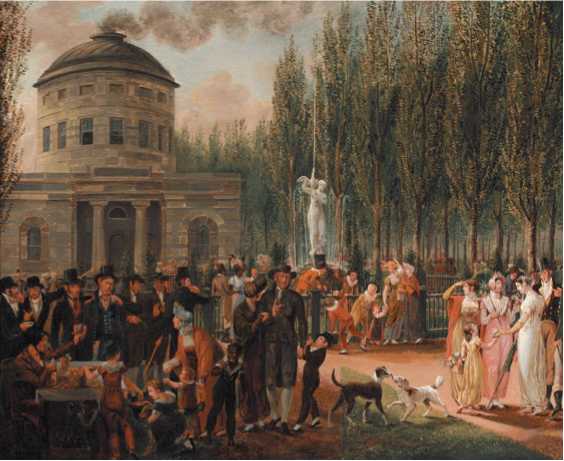The sectional issues that occupied the energies of politicians and strained the ties between the people of the different regions were produced by powerful forces that actually bound the sections together. Growth caused differences that sometimes led to conflict, but growth itself was the product of prosperity. People were drawn to the West by the expectation that life would be better there, as more often than not it was, at least in the long run. Henry Clay based his American System on the idea that sectional economic differences could be mutually beneficial. He argued plausibly that western farmers would profit by selling their crops to eastern city dwellers and that spending public money on building roads and other internal improvements would make transportation and communication less expensive and thus benefit everyone.
Another force unifying the nation was patriotism; the increasing size and prosperity of the nation made people proud to be part of a growing, dynamic society. Still another was the uniqueness of the American system of government and the people’s knowledge that their immediate ancestors had created it. John

John Lewis Krimmel's painting of the Fourth of July in Centre Square Philadelphia (1812). Note the diversity of those who've assembled to observe the festivities.
Source: Courtesy of the Pennsylvania Academy of Fine Arts, Philadelphia. Pennsylvania Academy purchase (from the estate of Paul Beck, Jr.).
Adams and Thomas Jefferson died on the same day, July 4, 1826, the fiftieth anniversary of the signing of the Declaration of Independence. People took this not as a remarkable coincidence, but as a sign from the heavens, an indication that God looked with favor on the American experiment. Many believed that patriotism and providence would transcend the intensifying sectionalism. They would be proven wrong.

Chapter Review




 World History
World History









